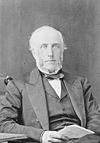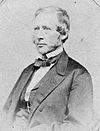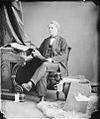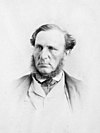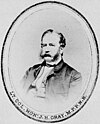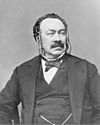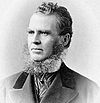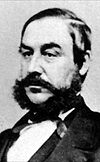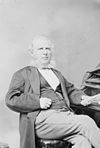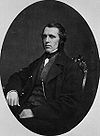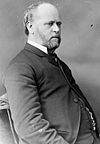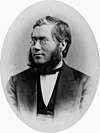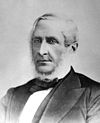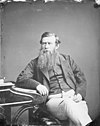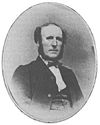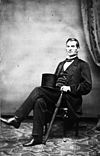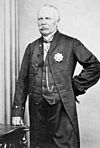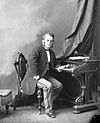
Sir Charles Tupper, 1st Baronet,, M.D. was a Canadian Father of Confederation who served as the sixth prime minister of Canada from May 1 to July 8, 1896. As the premier of Nova Scotia from 1864 to 1867, he led Nova Scotia into Confederation. He briefly served as the Canadian prime minister, from seven days after parliament had been dissolved, until he resigned on July 8, 1896, following his party's loss in the 1896 Canadian federal election. He is the only medical doctor to have ever held the office of prime minister of Canada and his 68-day tenure as prime minister is the shortest in Canadian history.
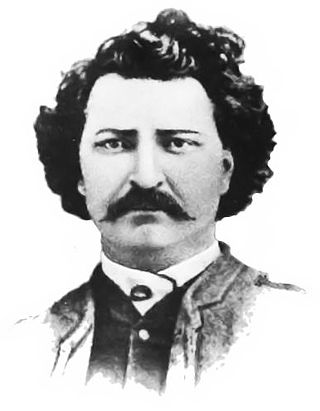
Louis Riel was a Canadian politician, a founder of the province of Manitoba, and a political leader of the Métis people. He led two resistance movements against the Government of Canada and its first prime minister John A. Macdonald. Riel sought to defend Métis rights and identity as the Northwest Territories came progressively under the Canadian sphere of influence.

Canada has ten provinces and three territories that are sub-national administrative divisions under the jurisdiction of the Canadian Constitution. In the 1867 Canadian Confederation, three provinces of British North America—New Brunswick, Nova Scotia, and the Province of Canada —united to form a federation, becoming a fully independent country over the next century. Over its history, Canada's international borders have changed several times as it has added territories and provinces, making it the world's second-largest country by area.

Canadian Confederation was the process by which three British North American provinces—the Province of Canada, Nova Scotia, and New Brunswick—were united into one federation called the Dominion of Canada, on July 1, 1867. Upon Confederation, Canada consisted of four provinces: Ontario and Quebec, which had been split out from the Province of Canada, and the provinces of Nova Scotia and New Brunswick. Over the years since Confederation, Canada has seen numerous territorial changes and expansions, resulting in the current number of ten provinces and three territories.

Sir George-Étienne Cartier, 1st Baronet, was a Canadian statesman and Father of Confederation. The English spelling of the name—George, instead of Georges, the usual French spelling—is explained by his having been named in honour of King George III.

The Red River Rebellion, also known as the Red River Resistance, Red River uprising, or First Riel Rebellion, was the sequence of events that led up to the 1869 establishment of a provisional government by Métis leader Louis Riel and his followers at the Red River Colony, in the early stages of establishing today's Canadian province of Manitoba. It had earlier been a territory called Rupert's Land and been under control of the Hudson's Bay Company before it was sold.
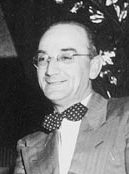
Joseph Roberts Smallwood was a Newfoundlander and Canadian politician. He was the main force who brought the Dominion of Newfoundland into Canadian Confederation in 1949, becoming the first premier of Newfoundland, serving until 1972. As premier, he vigorously promoted economic development, championed the welfare state, and emphasized modernization of education and transportation. The results of his efforts to promote industrialization were mixed, with the most favourable results in hydroelectricity, iron mining and paper mills.

The Charlottetown Conference was held in Charlottetown, Prince Edward Island for representatives from colonies of British North America to discuss Canadian Confederation. The conference took place between September 1 through 9, 1864. The conference had been planned as a meeting of representatives from the Maritime colonies; Nova Scotia, New Brunswick and Prince Edward Island. Britain encouraged a Maritime Union between these colonies, hoping that they would then become less economically and politically dependent on the Crown, and provide for greater economic and military power for the region in light of the American Civil War. However, another colony, the Province of Canada, comprising present-day Ontario and Québec, heard news of the planned conference and asked that the agenda be expanded to discuss a union that would also include them.

The Quebec Conference was held from October 10 to 24, 1864, to discuss a proposed Canadian confederation. It was in response to the shift in political ground when the United Kingdom and the United States had come very close to engaging in war with each other. Therefore, the overall goal of the conference was to elaborate on policies surrounding federalism and creating a single state, both of which had been discussed at the Charlottetown Conference around a month earlier. Canada West leader John A. Macdonald requested Governor-General Charles Monck to invite all representatives from the three Maritime provinces and Newfoundland to meet with the candidates who formed the United Canada to Quebec in October 1864. Although Newfoundland sent two observers, it did not participate directly in the proceedings.

The Meech Lake Accord was a series of proposed amendments to the Constitution of Canada negotiated in 1987 by Prime Minister Brian Mulroney and all 10 Canadian provincial premiers. It was intended to persuade the government of Quebec to symbolically endorse the 1982 constitutional amendments by providing for some decentralization of the Canadian federation.
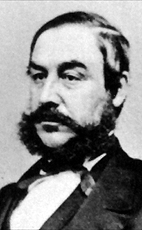
John Mercer Johnson was a Canadian lawyer and politician from the Province of New Brunswick, and a Father of Confederation. He represented Northumberland in the Legislative Assembly of New Brunswick from 1850 to 1865, and again from 1866 to 1867, each time elected as a candidate aligned with the liberal movement. Johnson was appointed to the Executive Council of New Brunswick and became the province's solicitor general, postmaster, minister without portfolio and attorney general. He attended all three conferences for Canadian Confederation and supported Canada's creation. In the first parliament for the country of Canada, Johnson was elected to represent Northumberland, serving in the role from 1867 to 1868 as a Liberal member. Plaques have been erected in his honour in Chatham, his hometown, and a mountain in Northumberland county was named for him.

The London Conference was held in London, in the United Kingdom, in 1866. It was the third and final in a series of conferences that led to Canadian Confederation in 1867. Sixteen delegates from the Province of Canada, Nova Scotia, and New Brunswick gathered to set out the final outline of the proposed Canadian Confederation, resulting in the British North America Act, 1867.

The Manitoba Act, 1870 is an act of the Parliament of Canada, and part of the Constitution of Canada, that provided for the admission of Manitoba as the fifth province of Canada.
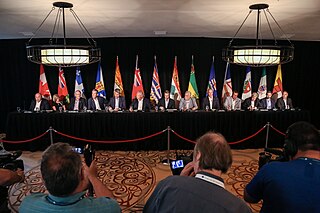
The Council of the Federation is a multilateral congress composed of the premiers of each of Canada's 13 provinces and territories, which meets at least twice annually.

Post-Confederation Canada (1867–1914) is history of Canada from the formation of the Dominion to the outbreak of World War I in 1914. Canada had a population of 3.5 million, residing in the large expanse from Cape Breton to just beyond the Great Lakes, usually within a hundred miles or so of the Canada–United States border. One in three Canadians was French, and about 100,000 were aboriginal. It was a rural country composed of small farms. With a population of 115,000, Montreal was the largest city, followed by Toronto and Quebec at about 60,000. Pigs roamed the muddy streets of Ottawa, the small new national capital.
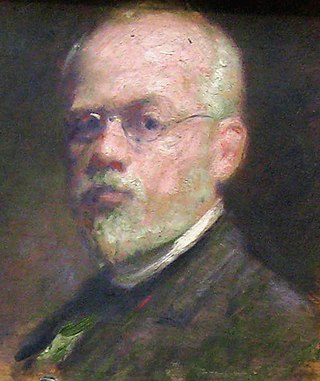
Robert Harris was a Welsh-born Canadian painter, most noted for his portrait of the Fathers of Confederation.

The Newfoundland referendums of 1948 were a series of two referendums to decide the political future of the Dominion of Newfoundland. Before the referendums, Newfoundland was in debt and went through several delegations to determine whether the country would join Canada, remain under British rule or regain independence. The voting for the referendums occurred on June 3 and July 22, 1948. The eventual result was for Newfoundland to enter into Confederation, which it did on March 31, 1949, becoming the tenth province of Canada.

The Canadian province of Newfoundland and Labrador has a unicameral legislature, the General Assembly composed of the Lieutenant Governor and the House of Assembly, which operates on the Westminster system of government. The executive function of government is formed by the Lieutenant Governor, the premier and his or her cabinet.

The Preamble to the Constitution Act, 1867 is a provision of the Constitution of Canada, setting out some of the general goals and principles of the Act. Although not itself a substantive provision, the courts have used it as a guide to the interpretation of the Constitution of Canada, particularly unwritten constitutional principles which inform the history and meaning of the Constitution.

Section 146 of the Constitution Act, 1867 is a provision of the Constitution of Canada authorising the expansion of Canada by admitting British Columbia, Newfoundland, Prince Edward Island, Rupert's Land, and the North-Western Territory into Canada.


